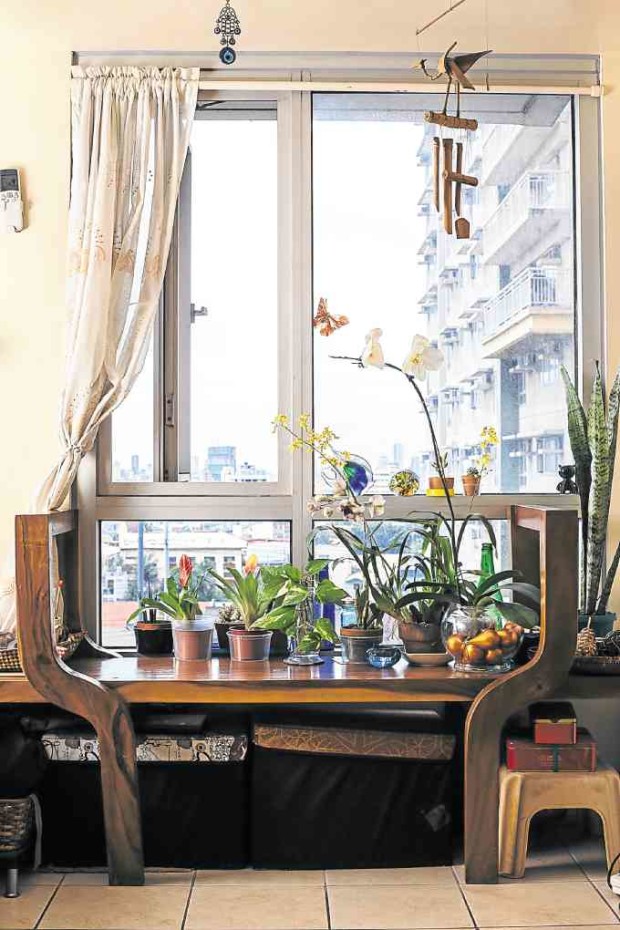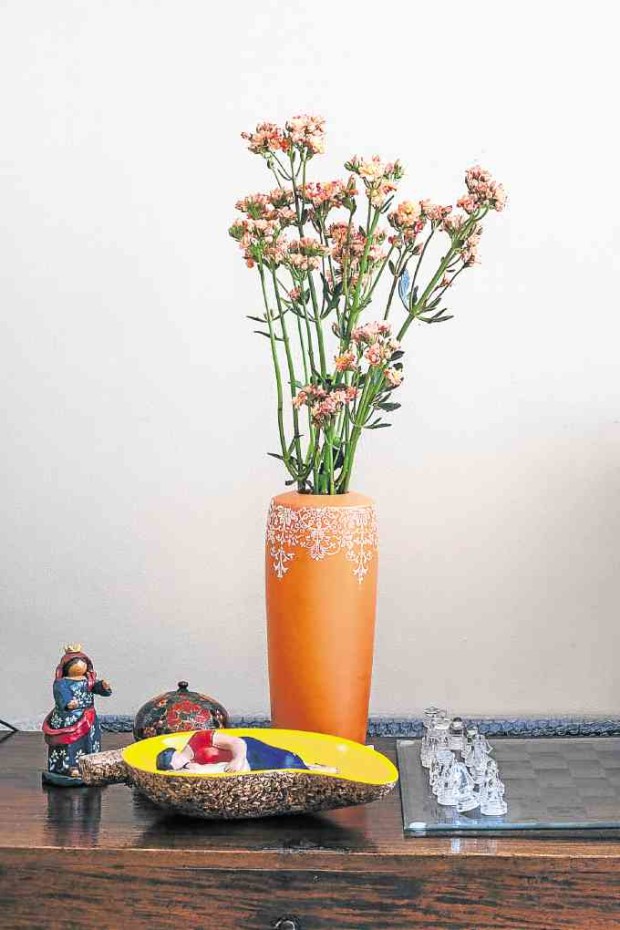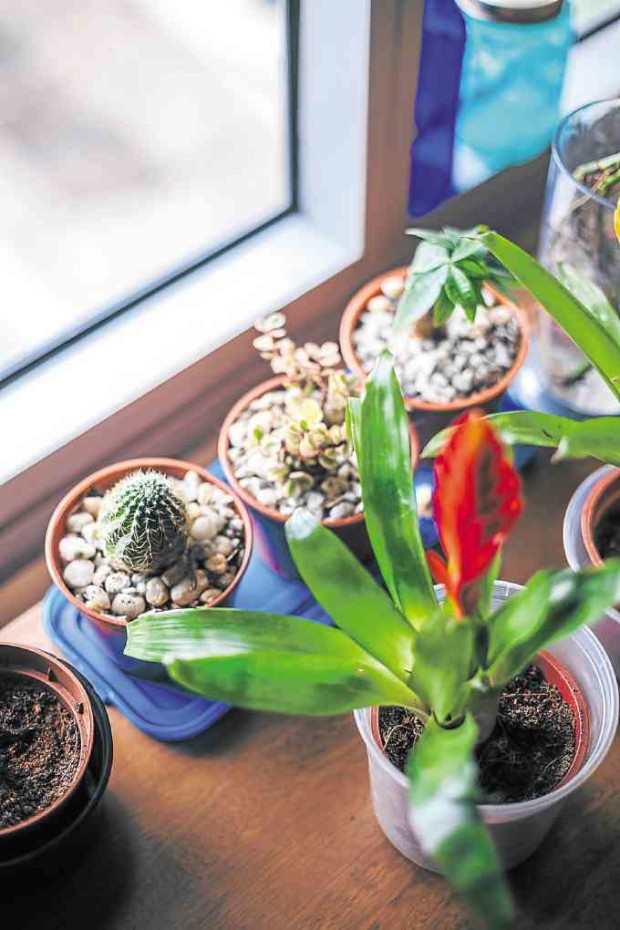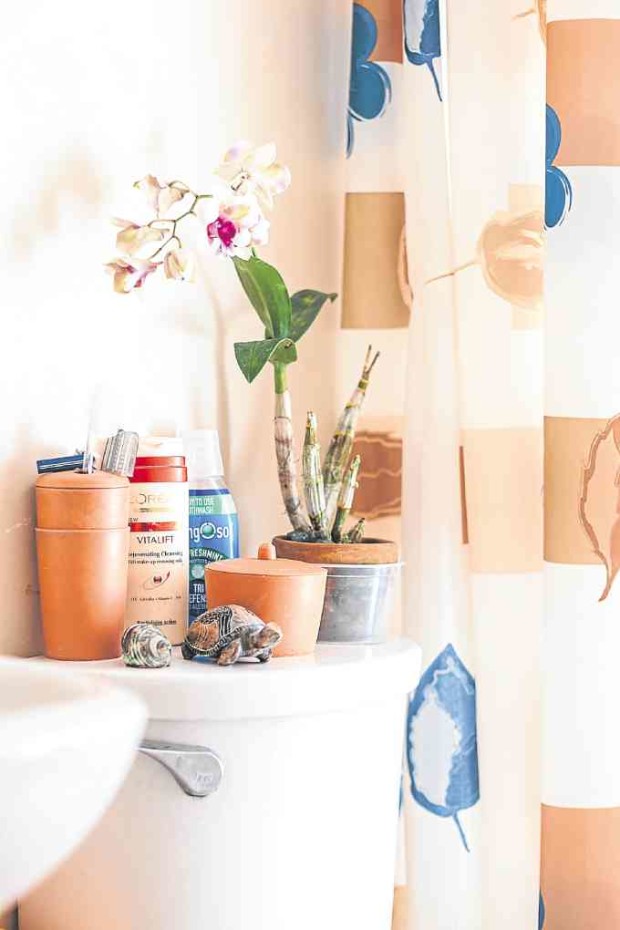Garden in a box

Bromeliads, cacti, orchids and snake plants can thrive in indirect lighting. PHOTOS BY JILSON SECKLER TIU
Sure it’s just a short ride to the office: no more waking up early, sweating it out in traffic and still coming in late. And yes, on the 10th floor there’s less likelihood of waking up in the middle of the night during a typhoon to find your floor slick with seeping floodwaters.
Which explains why more people now choose to live in condos, never mind that the unit is basically a box in a high-rise in the middle of the city.
Not that healthy, it turns out, as with limited ventilation, these homes trap all the chemical fumes and air pollutants emitted by synthetic materials such as plastics, Styrofoam, glass, tiles, paints, electronic devices, aerosol sprays and cleaning agents that we can’t seem to live without.
Fortunately, plants absorb carbon dioxide and air pollutants while emitting oxygen, the simple explanation behind the walk in the park being an effective stress-buster.
Serapion Metilla, an ornamental hobbyist and plant arts expert, described several experiments over two years conducted by the National Aeronautics and Space Administration that placed houseplants and flowers in a sealed chamber. The experiment concluded that plants can remove formaldehyde, benzene and trichloroethylene from the air inside the sealed chamber.
Article continues after this advertisementPlants improve the quality of air we breathe, said Metilla, as the oxygen from plants that we breathe in helps us feel better and improves our mental and physical well-being. At 88 and still sprightly enough to tend to his Mett’s Plant Arts at the Quezon Memorial Circle, Metilla must know what he’s talking about.
Article continues after this advertisementPlants definitely add a sense of freshness to a room, not to mention color and aesthetics in the case of flowering plants, he added.
But not all plants can thrive in small spaces, especially inside condo units that often have little natural sunlight.
“Use supplemental lighting then,” Metilla suggested, adding that LED lights can help plants grow and photosynthesize. LED lights also consume less electricity.
The other option, he said, is to grow plants that can tolerate low light conditions and thrive well in the shade and indirect light (see box right).
But if all else fails, there are always cut flowers you can get from nearby malls and supermarkets, for as little as P150 a bunch. Choose blooms that last more than a week like carnations, mums and dendrobium orchids. Make sure to wash your vase with hot water and a little bleach to kill bacteria that can wilt the flowers. Cut the flower stems at an angle to help them absorb water. Change the water every two days and snip off wilted leaves and flowers. Trim the stem at an angle every time.
Fortunately for us, the Philippines has one of the highest biodiversity in the world, making fresh flowers in our homes an affordable, everyday luxury.
Shady deals: Plants that thrive indoors
- For small spaces, a dish garden or a container garden is one option. And so is a terrarium, or a compact garden inside a glass bowl. “I use those huge old bottles called dama juana,” Metilla said. Inside such glass containers, moisture forms and is recycled, so there is no need for watering, he added.
- Other plants that thrive in small spaces are philodendron, fortune plant, pothos, spider plant, palm and corn plant. Fertilize once a month because the limited soil in their small pots can easily run out of nutrients.
- If you’re too busy to pay close attention to your plants, choose succulents like cactus and those from the sansevieria family like snake plants and mother-in-law’s tongue. Because they store water in their leaves, they can go without watering for more than a week. Sansevieria plants are tough indoors, occupy little space and absorb harmful indoor gases like benzene, so placing them in the bathroom where the cleaning agents are, may be a good idea. Just make sure they don’t get too wet.
- Dish or container gardens make for mobile decorative pieces that can be placed as a fresh accent anywhere. But they need supplemental lighting to thrive.
- Herbs need sunlight, but not too direct nor too hot. Do not overwater.
- Flowering plants generally need a lot of sun, but peace lilies and African violets can grow well indoors, while orchids and bromeliads thrive in bright but indirect lighting so place them by the window. Fertilizer also helps to keep them in bloom.
- Fertilizers come in many forms, but granules work best for indoor plants. One tablespoon in a gallon of water or a teaspoon in half a gallon is the recommended strength, applied every 10 to 15 days.
- A potting medium of soil mixed with ipa (rice husks), coconut coir dust and sand to make the soil porous will help the water drain. Do not use clayish soil because it does not drain water and can lead to rot.
- As for insects that may invade your plants, a water and weak organic soap (like Perla) solution sprayed on leaves is best, so pests won’t eat them. A nicotine and water solution can also be used, “but why promote the sale of cigarettes?” Metilla asked. —Pennie A. Dela Cruz


